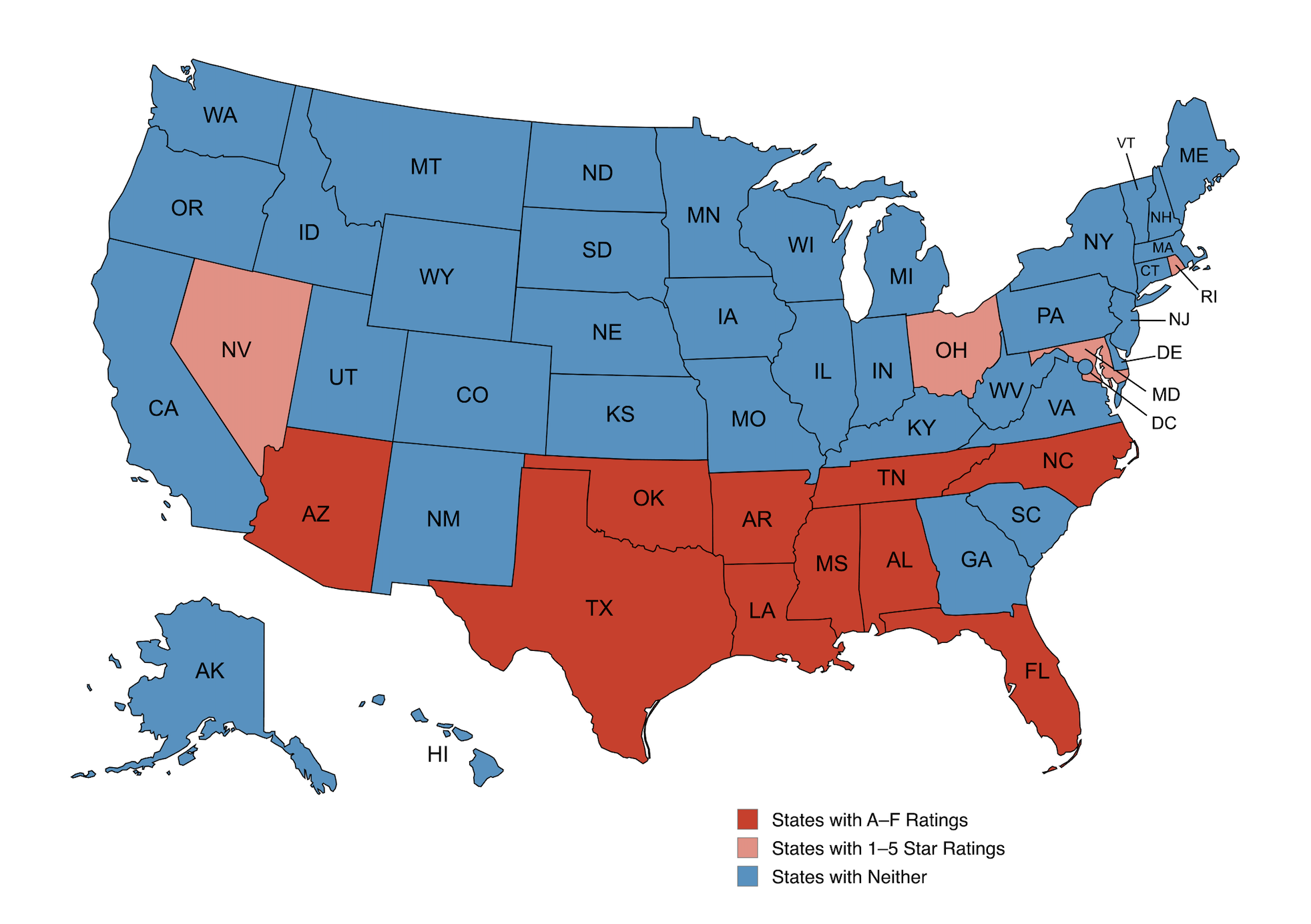
It’s hard to be optimistic about education reform in the wake of the election. This is nothing new; as Tim Daly wrote recently, we’ve been in an “education depression” for over a decade, and that seems unlikely to change anytime soon. (It was unclear what a Kamala Harris victory would have meant for schools.)
While I’m doubtful that President Trump will eliminate the U.S. Department of Education or otherwise make drastic changes to the federal role in schooling, I do suspect that Trump 2.0 will lead to The Resistance 2.0. Especially if he follows through with his promises on mass deportations, which looks increasingly likely, and is likely to be a humanitarian disaster.
Trump 2.0 is also likely to be bad for education reform, especially in blue states. If history repeats itself, reform-minded Democrats in liberal bastions like California, Illinois, and New York will be shunned or sidelined because Trump’s support for school choice will make the issue radioactive on the left. Given the strong evidence that expanding urban charter schools, in particular, lifts achievement and important long-term outcomes for kids, stopping charter growth in its tracks would be terrible for students in Los Angeles, Chicago, New York, and elsewhere.
But maybe that take is too pessimistic. Perhaps the dramatic rightward shift in some of the bluest parts of America will encourage Democrats to fight for the center again, including by embracing sensible education reforms. Let’s give this possibility a hearing. Along the way, we’ll discuss the intramural fights happening within both parties, as well as the state of play at the national versus state and local levels.
A mini-history of the politics that made education reform possible
Back in the day, both parties were fighting for the center, with their more moderate, more technocratic factions ascendant. George H. W. Bush promised a “kinder, gentler” nation (and GOP) after eight years of President Reagan. Bill Clinton branded himself a “New” Democrat and embraced a “third way.” George W. Bush promoted “compassionate conservatism” to distinguish himself from Newt Gingrich and the Congressional Republicans of the 1990s.
I will leave it to historians and political scientists to explain why this era in American politics was so conducive to centrism. Certainly, Clinton made the case that the Democrats had no choice, given that they had lost five of six presidential elections from 1968 through 1988, a period during which “liberal” became a dirty word. His successful run in the 90s—the first two-term Democratic president since FDR—solidified the centrist Democratic strategy. And perhaps that in turn encouraged Republicans to quickly coalesce around Bush the Second—a relative moderate—as well.
Whatever their underlying causes, these macro-politics were fantastic for education reform—for putting the needs of students (especially disadvantaged students) over the needs of adults working in the system. Most importantly, it allowed Clinton and the Democrats to break with the teachers unions on key issues—not all of the time, or on everything, but certainly on standards-based reform and public-school choice, including charter schools. That trend continued under President Obama. The unions endorsed Hillary Clinton in the Democratic primaries, leaving him a free hand to disagree with them. He famously called for merit pay for teachers at a speech at the National Education Association conference—while running for president. When in office, he appointed uber-reformer Arne Duncan, supported charter schools, and pushed for tough-minded teacher evaluations.
Choice and accountability were an easier sell to Republicans, but President George W. Bush was also able to convince the GOP to back his call for an aggressive federal role and a focus on racial achievement gaps in the form of No Child Left Behind. And at the state level, Republican governors didn’t fight too hard against increases in spending, and in some cases welcomed it. Had Mitt Romney won in 2012, he likely would have kept the good times rolling, considering his successful, centrist tenure on education as governor of Massachusetts.
So what changed? The wars in Iraq and Afghanistan, and especially the financial crisis and the resulting Great Recession, sparked a populist backlash. It started on the right, first with the Tea Party movement and then with the nomination of Trump. The failures of the Bush years ruined the neo-conservatives’ reputation as the “adults in the room” that cared about governance and institutions. Conservative populists were eager to burn it all down.
Progressives on the left soon became restive, as well. Disappointed that the Obama years weren’t bringing as much change as they’d hoped, angry over police brutality toward Black men, and alarmed by the GOP’s rightward turn, they started pushing the Democrats away from the center, too.
Education as an issue wasn’t the cause of these tectonic shifts but did play a minor role. The Common Core became a bête noire of the Tea Party movement. Test-based teacher evaluations helped the unions spark a testing backlash. The 1619 Project and schools’ handling of transgender issues were conspicuous parts of the “woke wave” of the late Trump era.
But mostly education policy was on the receiving end of these larger cultural and political changes. By the time Hillary Clinton ran in 2016, she was cozying up to the teachers unions, talking about progressive favorites like universal pre-K, and generally downplaying the reform efforts of her husband’s long-ago administration. Donald Trump obviously didn’t care much about education or make it a priority, though he was happy to participate in the brewing culture wars. Joe Biden embraced his self-image as the “most union-friendly president in history,” including the teachers unions, bragging that he slept with a member of the National Education Association (his wife Jill) every night. Now we’re back to Trump, and reformers’ exile continues.
Or does it?
EdNext in your inbox
Sign up for the EdNext Weekly newsletter, and stay up to date with the Daily Digest, delivered straight to your inbox.
National education politics: Reformers not welcome here
I wish I could find reason for hope that either party would return to its reform roots at the national (i.e., federal) level. But with Trump in office and Democrats in the grip of negative partisanship, that’s extremely unlikely.
Not that there won’t be opportunities. Trump might invest political capital in attaching an ambitious school choice proposal to his tax reform plan—though I still find that possibility remote, nor do I see Republicans making it a priority compared to tax cuts or deficit reduction. But it’s possible.
Meanwhile, the renewed attention both parties are giving to working class voters makes high-quality career and technical education a natural area where rare bipartisan action might be feasible. We could see constructive efforts to shift some of the federal largesse from traditional higher education institutions to those providing shorter-term technical training, for instance.
There’s no sign, however, that Trump and congressional Republicans want to use the federal government to pursue Bush-style reforms. Far from it. If they keep the Department of Education, it won’t be to pursue greater accountability for schools or evidence-based practices in classrooms but, as Rick Hess suspects, to wage the culture war.
And on the left, will we see national Democrats break with the teachers unions again? That will depend on how their postmortem food fight turns out and whether centrists in the party win the argument that moderation is key to retrieving working-class voters and making more gains in the suburbs. Advocates were thrilled when NBC’s Chuck Todd argued on the air that Latino voters in particular might be swayed with arguments over school choice. Robert Pondiscio also sees an opportunity for our friends on the left to embrace school choice—“or lose more elections.”
Maybe. But I worry that the “new centrism” that Democrats will embrace will be more economically populist than the neo-liberalism that gave air to education reform in its heyday. That doesn’t strike me as a posture that would include marginalizing the role of the teachers unions in setting the party’s education policies.
More reason for hope at the state and local levels?
While national education politics look stuck, perhaps some ice might break free in the states, suburbs, and cities.
Things are already in decent shape in many red states when it comes to education reform. While the press continues to obsess over Republicans’ embrace of private school choice, including universal education savings accounts, the GOP’s reform agenda in many places is much broader and bolder. At this week’s ExcelinEd conference in Oklahoma City, (mostly) red-state governors and legislators will share ideas across a host of issues, including expanding high-quality charter schools, implementing science of reading and “third grade guarantee” laws, building high-quality CTE systems, and much else. It’s red states, not blue, that have maintained real accountability systems, with A-through-F or 5-star ratings (see map). The progress is palpable.
States that use A–F or 5-star ratings for their school accountability systems

That’s because in Texas, Georgia, Ohio, Tennessee, and other Republican bastions, the populist, Trump wing of the party is not in full control. Normies have a lot of say—and in most cases occupy the governor’s mansions. Strong executive and legislative leadership is making a difference.
But what about blue states? Reformers there face the twin challenges of ascendant teachers unions and bad ideas emanating from the left. (Regarding the latter: notions like going soft on discipline, inflating grades, and abolishing gifted education “because equity.”) Both challenges make it harder than it should be to run effective schools and school systems. And both are bad for kids, especially poor kids.
But here’s where a bit of silver lining glimmers through: Voters in deep-blue states and cities appear to have had enough of poor governance and terrible results. California voters, for example, overturned a proposition that had decriminalized shoplifting items worth less than $1,000 and ousted a “progressive prosecutor” in Los Angeles. Chicago voters rejected some of the Chicago Teachers Union’s candidates in the city’s first-in-a-generation school board race. Left-leaning pundits are begging Democrats to run their big cities more effectively.
And sure enough, the largest, most diverse urban areas were the ones that swung toward Trump the hardest. Democrats will spend the next several months wondering why. Let’s hope they decide that city-dwellers are angry about performative progressivism and instead crave good government, including better schools.
* * *
Once upon a time, both Democrats and Republicans used education reform to signal a break from the previous, discredited, more ideologically rigid versions of themselves. Perhaps it could happen again—the sooner the better. One must hope.
Michael J. Petrilli is president of the Thomas B. Fordham Institute, visiting fellow at Stanford University’s Hoover Institution, and an executive editor of Education Next.
This post originally appeared on the Fordham Institute’s Flypaper blog.


